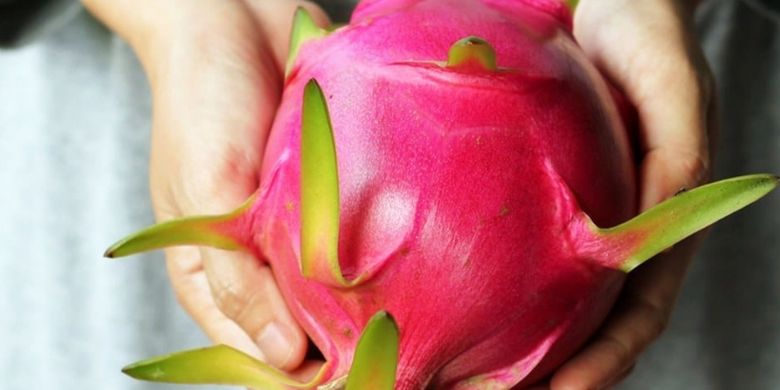Tooth extraction is one of the most frequently performed treatments in dentistry, which causes injury to both soft and hard tissue so the body responds physiologically by healing the wound. The wound healing process, from the beginning of the trauma to the be healed entirely, goes through several complex stages, consisting of the inflammatory phase, the proliferation phase, and the maturation phase.
The acceleration of wound healing process is influenced by several factors, including nutrition. One of these affecting nutrients can be from red dragon fruit (Hylocereus polyrhizus) which has fruit rind containing active compounds such as cyanidin 3-ramnosil glucoside 5-glucoside, flavonoids, thiamine, niacin, pyridoxine, cobalamin, phenolic, polyphenols, terpenoids, carotene, phytoalbumin, betalain. tannins, saponins, and vitamin C.
As we all know, several active substances that are antioxidant contained in dragon fruit rind can accelerate the wound healing process. The content of saponins and tannins plays a role in tissue regeneration in the wound healing process. Flavonoids accelerate wound healing by inhibiting lipid peroxidation which can increase collagen fibers and vascularization, and play a role in scavenging free radicals. Vitamin C as an antioxidant helps the wound healing process by influencing collagen synthesis, the integrity of blood vessel walls, fibroblasts, and the migration of macrophages. Therefore, it is necessary to prove whether the rind of red dragon fruit (Hylocereus polyrhizus) can increase TGF-β expression, the number of fibroblasts, and new blood vessels in the wound healing process.
This study used 20 experimental animals, Rattus norwegicus Wistar strain, male sex, 2-3 months old, and weighing 200-300 grams. All experimental animals were given the same treatment, the extraction of lower incisors using special pliers previously anesthetized with Ketamine, which were then divided into 4 groups: the control group was given CMC gel and the treatment group was given dragon fruit peel extract gel with a concentration of 15%, 30 %, and 60%. On the fourth day, the experimental animals were sacrificed and scar tissue was taken for observation of TGFβ expression, number of fibroblasts and new blood vessels.
The results showed that the treatment group that was given 15%, 30%, and 60% red dragon fruit rind extract gel showed significant increase on the number of TGFβ expression, fibroblasts and new blood vessels on the extraction scars compared to the control group. The most increase in TGFβ expression, the largest number of fibroblasts and new blood vessels occurred in the group given dragon fruit extract gel at 30% concentration, at a concentration of 60% there was a decrease in the effect equivalent to a concentration of 15%. So it can be said that 30% dragon fruit extract gel is the optimal concentration to increase TGFβ expression, the number of fibroblasts and new blood vessels.
This study showed that the active substances contained in dragon fruit rind, such as flavonoids, can inhibit the action of arachidonic acid through the lipoxygenase pathway which is followed by inhibition of prostaglandins, thromboxane, and leukotrienes production as inflammatory mediators so the migration of leukocytes to the inflammatory area will decrease. It will accelerate the inflammatory process towards the proliferation phase, so wound healing occurs more quickly. Based on the research results, it can be concluded that the red dragon fruit rind extract (Hylocereus polyrhizus) can accelerate wound healing.
Author: Wisnu Setyari J, drg., M.Kes.,
Detailed information of this research can be viewed in our paper: Hendrik Setia Budi, Wisnu Setyari Juliastuti, Rini Deviyanti, Yuliati Yuliati, Rofillah Putri Andhini (2020). The Potential of Red Dragon Fruit ( Hylocereuspolyrhizus ) Rind Extract Accelerates Wound Healing Process Post Tooth Extraction. Malaysian Journal of Medicine and Health Sciences 16 (Supp 4) 37 -41, July 2020_ https://www.ejgd.org/temp/EurJGenDent93313-5336652_144926.pdf





